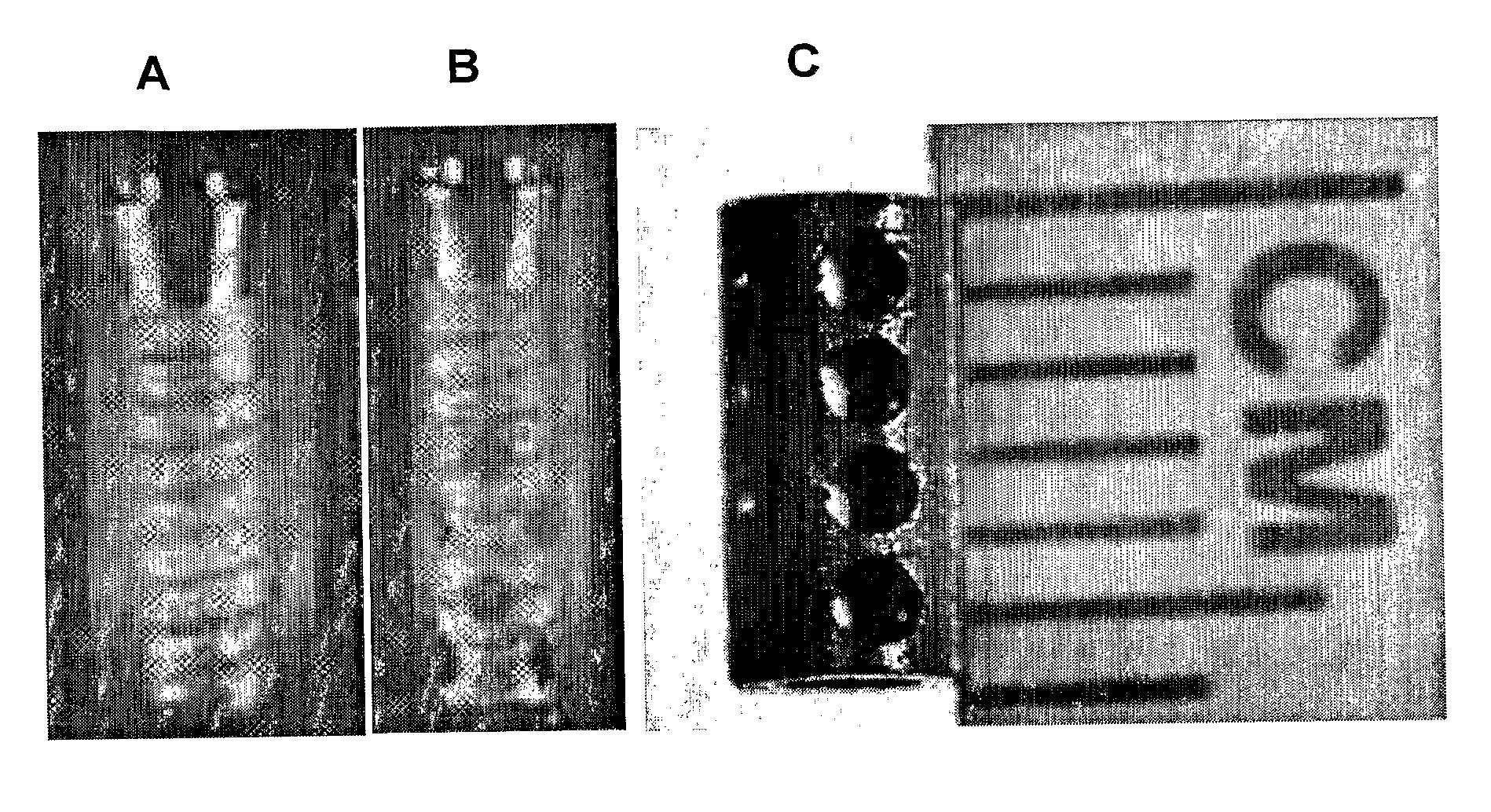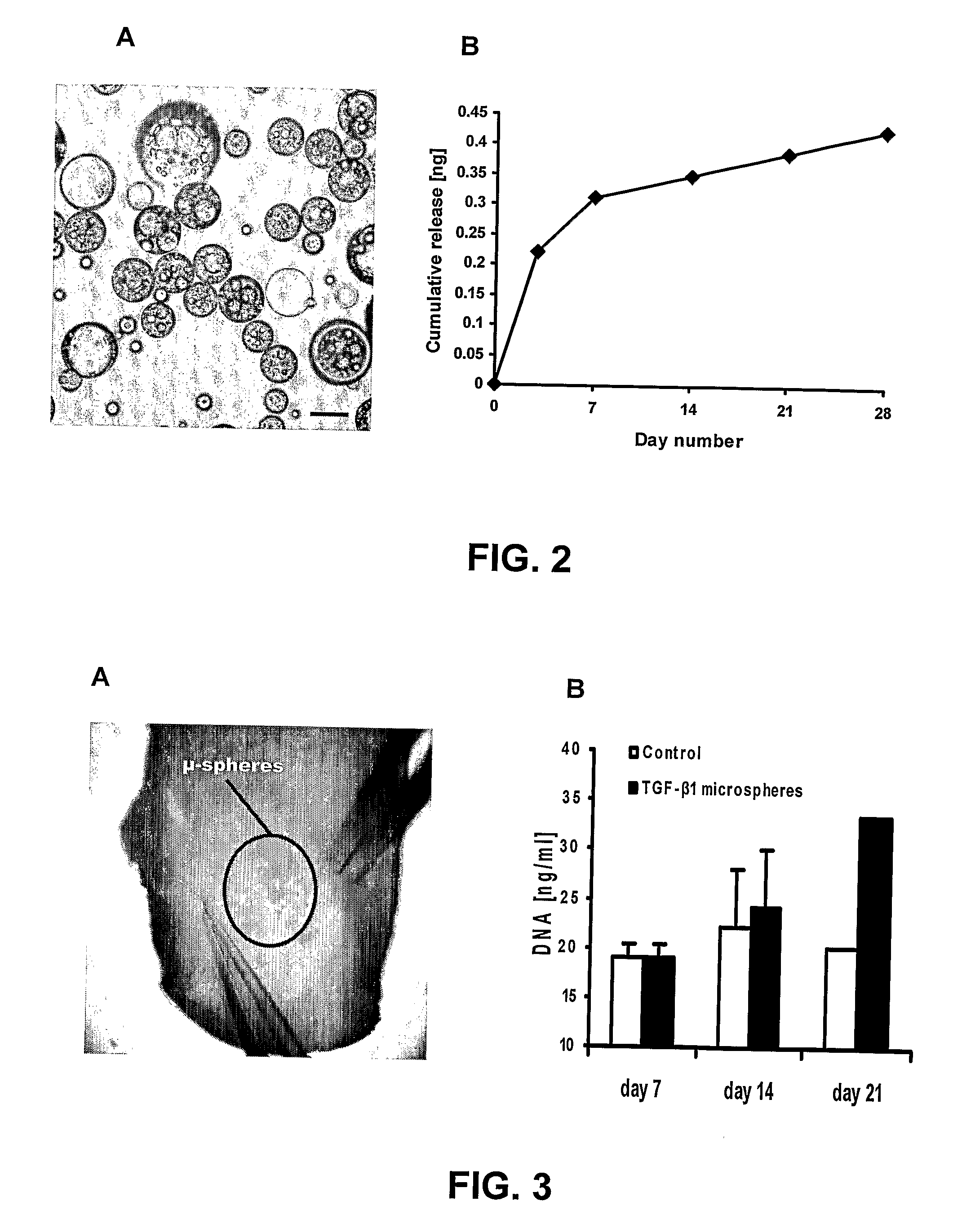Hollow and Porous Orthopaedic or Dental Implant that Delivers a Biological Agent
- Summary
- Abstract
- Description
- Claims
- Application Information
AI Technical Summary
Benefits of technology
Problems solved by technology
Method used
Image
Examples
example 1
Sustained Release of TGFβ3 from PLGA Microspheres and its Effects on Early Osteogenic Differentiation of Human Mesenchymal Stem Cells
Preparation of PLGA Microspheres and Encapsulation of TGFβ3
[0042] Microspheres of poly(DL-lactic-co-glycolic acid) (PLGA; Sigma, St. Louis, Mo.) of 50:50 and 75:25 PLA:PGA ratios (Sigma, St. Louis, Mo.) were prepared using double emulsion technique ((water-in-oil)-in-water). (Lu, L., et al, 2001; Wei G, et al, 2004; Ruan, G, et al, 2002) A total of 250 mg PLGA was dissolved into 1 ml dichloromethane. A total of 2.5 μg of recombinant human TGFβ3 with molecular weight of 25 kDa (R&D Systems, Minneapolis, Minn.) was diluted in 50 μl of reconstituting solution per manufacturer protocol and added to the PLGA solution, forming a mixture (primary emulsion) that was emulsified for 1 min (water-in-oil). The primary emulsion was then added to 2 ml of 1% polyvinyl alcohol (PVA, MW 30,000-70,000), followed by 1 min mixing ((water-in-oil)-in-water). Upon adding ...
example 2
Titanium Implants
[0060] Smooth, commercially pure titanium implants were custom manufactured at the Medical Devices machine shop at the University of Illinois at Chicago. The implants were hollow cylindrical titanium rods measuring 4 mm×2 mm×6 mm (outer diameter×inner diameter×length). The implants also contained 4 cross-holes measuring 1 mm in diameter. The dimensions of the implants reflected those of common dental implants currently available on the market. Even though the implants were modeled from dental implants, this technology has orthopaedic applications.
Materials and Methods
[0061] Polylactic-co-glycolic acid (PLGA) is an FDA approved co-polymer that has been shown to be effective in controlled delivery of large biomolecules, such as growth factors. When processed correctly, PLGA can be made to form microspheres encapsulating biomolecules. PLGA microspheres were made in the laboratory that averaged 64±μm in diameter and encapsulating TGF-β1. PLGA microspheres can also b...
PUM
| Property | Measurement | Unit |
|---|---|---|
| Time | aaaaa | aaaaa |
| Shape | aaaaa | aaaaa |
| Biological properties | aaaaa | aaaaa |
Abstract
Description
Claims
Application Information
 Login to View More
Login to View More - R&D
- Intellectual Property
- Life Sciences
- Materials
- Tech Scout
- Unparalleled Data Quality
- Higher Quality Content
- 60% Fewer Hallucinations
Browse by: Latest US Patents, China's latest patents, Technical Efficacy Thesaurus, Application Domain, Technology Topic, Popular Technical Reports.
© 2025 PatSnap. All rights reserved.Legal|Privacy policy|Modern Slavery Act Transparency Statement|Sitemap|About US| Contact US: help@patsnap.com



